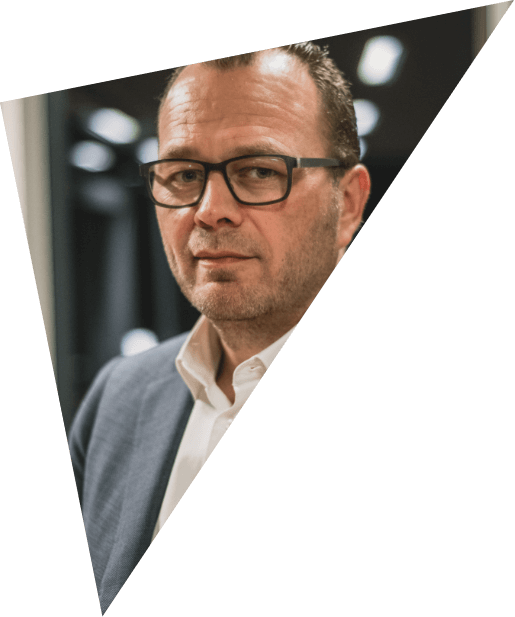
Helping businesses with a future-proof workforce
The world of work is in constant flux. The corona crisis has changed the way we live and work and will continue to do so. The pandemic has forced us to think differently and to look for alternatives to the “way things are done” – and we have been successful. Luckily, we have kept a close eye on change in the field for many years, work together with stakeholders such as academics, and maintain constant dialogues with our customers. In doing so, we can take action before issues arise.
Jan Laurijssen, HR business development manager at SD Worx People Solutions, gives a sneak peek into the near future of work:
For years now, we have witnessed an urgent and increasing demand for individualisation on the part of employees. As an employer, the only answer is the far-reaching personalisation of working relationships.SD Worx has long offered the tools needed to enable this in an efficient way, including time and location-independent work and flexible reward.
Flexibilisation of the labour market
Employers are increasingly hiring – or at least considering hiring – employees with non-permanent contract forms, such as freelancers and temporary workers. They have no choice but to do so if they want to maintain top performance in the war for talent. Yet at the same time, there is still a large group of jobseekers and plenty of potential workers who must be activated, even during global pandemics like the corona crisis. It is clear that all of us will have to constantly update our skills for the rest of our working lives to remain relevant. Certainly in times of corona. More and more temporary workers are being deployed to fill existing vacancies quickly, and employers are increasingly calling on outsourcing services to bring experts on board. This flexibilisation of the work organisation is significantly growing in importance.
Side-by-side collaboration
In order to get a good insight in what happens in the labour market, we also reach out to the academic world. For example, we have been structurally collaborating with the Antwerp Management School (AMS) since 2011. In this collaboration, we run two research programs on sustainable careers and flexible workforces. In this way, we combine our findings from the field with scientific research. Nevertheless, we cannot believe that a one-size-fits-all solution exists. Here, too, individualisation and personalisation are key words.
A turning point for many
In current organisational structures, flexible employment rarely is an HR matter because the HR team only manages permanent contracts. The decision to hire freelancers to handle outsourced services is usually made by procurement personnel. An organisation will have to align its business processes in accordance with this new way of hiring people. Of course, legislation must also be able to follow the legal impact of employing a flexible workforce.
In addition, here is another important question we need to find solutions for: how does an employer create a policy governing talent, purpose and engagement – three major HR themes – within the context of a flexible employment relationship and a flexible workforce?
Variation and choice abound
The pace at which we are moving towards embracing a flexible workforce is difficult to predict precisely because of individualisation. After all, people increasingly demand the freedom and flexibility to organise their lives as they see fit. They want to do what they like and even find purpose in it. The tight labour market allows people to make these choices, which leads to a paradox: we have more opportunities than ever, and yet job mobility is low. Young people may switch careers quickly after their first jobs, but still eventually settle down. Recent graduates still swear by decent, long-term jobs with caring employers. Despite the fact that employees are optimistic about their chances on the labour market, they do not often change careers – even though the labour market craves greater job mobility.
The fuel that drives all these movements is digitalisation. One example of a game-changing digital tool is our concept for flexible remuneration, our Flex Income PlanTM, which has existed for over 16 years. But it only became a success when we offered it to employees in the form of a web shop where they could choose their fringe benefits. Another example is Protime, our tool for planning and time registration, which ensures that employees can smoothly work independently of time and location. The SD Worx Digital Assistant includes all HR administration tasks in a single tool: employees can quickly arrange matters such as leave requests and reschedule meetings via their trusted devices, anytime and anywhere. This creates time for the employer or HR manager to focus on core and strategic tasks.
Fostering a creative mindset
In our years-long research into the workforce of the future, we have shed more light on the concrete impacts of a fluid workforce in terms of diversity, contract type and time/location-independent work. We also study how we can effectively activate potential employees who are currently inactive. In the process, we also explore concepts and trends in other countries, such as that of dual learning in Germany. We often join forces with other partners such as Experience@Work, which enables shared employment. It is a very interesting trajectory, but it continues to be a small-scale project because of its complexity and high trust requirements. The corona crisis may be a catalyst for higher adoption: employees from sectors that became inactive can jump into jobs where extra people are needed because of the crisis.
The future is still vague for some initiatives, but what remains clear is the fact that we must think even more creatively about how to organise employment in a sustainable way: one that offers a win-win-win for the employer, the employee and the labour market And finally, we will only be able to manage the complexity of a sustainable and flexible workforce through digital opportunities we will develop or bundle with other solutions from partners.

““The pace at which we are moving towards embracing a flexible workforce is difficult to predict precisely because of individualisation. After all, people increasingly demand the freedom and flexibility to organise their lives as they see fit. They want to do what they like and even find purpose in it.”
– Jan Laurijssen, HR business development manager at SD Worx People Solutions
Thibaut van Breugel, chief business process officer at SD Worx Staffing & Career Solutions, shares some of his insights and plans:
“At SD Worx, we have only one ambition: to spark success at the hearts of organisations. Within the context of staffing, this means matching the right people with the right jobs in the right way so that we actively contribute to a sound working environment for everyone, today and tomorrow.”
What is right?
“To determine the right job for the right candidate, we must know our candidates. With a database of over half a million candidates it is impossible to get to know everyone personally. However, doing so is absolutely necessary. After all, if we fail to identify suitable jobs for searching candidates within two weeks, they go somewhere else, and it becomes difficult for us to gain insights into their behaviour afterward. Have they started working with another temp agency, or have they signed a permanent contract? After six months, our data is no longer accurate, and we don’t know with certainty whether they are still in the job market.
“Thanks to our new Candidate Database Management project, we will have that knowledge, in complete accordance with GDPR requirements. These data insights are crucial. For example: if someone reads an article titled ‘How do I submit my resignation’, we know that they are planning on or at least considering leaving their position. We also know that company newcomers have a 50% chance of leaving within the first year, with the first two months being especially decisive. A temporary worker usually works at two or three companies before they sign permanent contracts. In some sectors, turnover is traditionally higher than in others, such as the hospitality industry.
“We have to make sure that we are present at every decisive crossroads in a person’s career path and have the right content for each candidate at those moments. We must provide answers to jobseekers’ questions and inspire them at all times. This results in more and regular interaction throughout the candidate’s employee journey and allows us to keep profiles up to date. It goes without saying that IT and marketing will play crucial roles here.”
Building a strong community
“Through focussed dialogue and specific relevant actions, we create a strong community in the long run. As a result, we will no longer have to post vacancies, as we will be able to communicate about the right open positions directly with our candidates, enabling us to reduce our dependence on job boards. Such boards increasingly focus on quantity, while we resolutely opt for quality. Exceptional quality is one of our core values, by the way.
“We seek to form real partnerships with candidates, whether they are employed by us or not. Doing so will contribute strongly to our ambition to support companies and their employees – regardless the form of their contracts – at every milestone in the entire employee journey, from talent attraction, reward policy and payroll to talent development. The link with SD Worx People Solutions is a unique asset. Our logistics training programme for temporary workers at Belgium Airport Services, for example, nicely illustrates the complementary results that this link delivers.”
Mutual reinforcement
“Now that we have merged into a single organisation, we are focusing on how SD Worx People Solutions and SD Worx Staffing & Career Solutions can reinforce each other even more. Payrolling for temporary employees is a key example. Some start-ups urgently want to hire their first employees, a situation that is very common in the hospitality sector, for instance.SD Worx Staffing & Career Solutions takes care of this immediately, after which the temporary employee can be permanently employed – granting our customers enormous flexibility.
“Thanks to our connection with SD Worx People Solutions, we can determine what industry-specific social legislation is applicable for our temporary employees from the outset. This connection also enables us to offer specialised advice and support for HR topics such as salary benchmarking. If the customer would benefit more from a different and more sustainable form of contract or way of working with an employee, we are able to offer our expertise in this area as well. Our added value for customers will grow, bringing them significant benefits through their collaboration with SD Worx”.

“We have to make sure that we are present at every decisive crossroads in a person’s career path and have the right content for each candidate at those moments.” – Thibaut van Breugel, chief business process officer at SD Worx People Solutions
